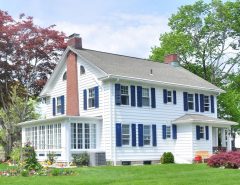Masonry is laying building materials precisely and carefully to create structurally sound, aesthetically pleasing buildings. It is a complex and labor-intensive trade that requires skilled workers to perform correctly.
Unreinforced masonry (URM) buildings can be hazardous during earthquakes. That is especially true of parapets, which are typically not braced and can collapse during a large quake.
Concrete
Concrete is the most used building material in the world and an essential ingredient for many masonry Seattle projects. It is an artificial composite construction material composed of a matrix or binder of cement, typically a coarse aggregate (generally rocky materials such as gravel, loose stones, and sand) and fine aggregate (usually a slurry made from water and cement).
Concrete can resist abrasion, chemical action, weathering, and tensile and comprehensive stresses for extended periods. Its lateral stiffness also helps it resist high winds, hurricanes, and tornadoes.
Masonry is an excellent choice for building because it is non-combustible – unlike wooden structures that quickly turn into tinderboxes during a fire. In addition, a masonry-constructed building will usually fall into on itself when it collapses, halting the spread of fire to adjacent buildings. However, unreinforced masonry is brittle and lacks tensile strength, which makes it unsafe during an earthquake. Therefore, older masonry buildings are often deemed at seismic risk and must undergo seismic upgrades.
Brick
Brick is an artificial construction material consisting of kneaded clay or sand-lime concrete, fire-hardened, and used in masonry construction. It is the most common building material and can be shaped, cut, or broken down into smaller pieces as required for a specific project. Bricks are assembled into walls in different patterns, called courses, which can be either structural or decorative.
In the past, laborers mixed clay and water, drove oxen over the mixture to trample it into a thick paste, scooped the clay into standardized wooden frames, and stamped the fronts and backs with stamps that indicated who made them. Then, the bricks were fired in a kiln and cooled before stacking, packing, and transporting.
Bricks have high compressive strength, low water absorption, and are termite resistant. They are also non-combustible and don’t assist the spread of fire, making them ideal for buildings in wildfire-prone areas. Bricks can be molded into slips, which are laid as returns for soldier courses, or headers, which form the vertical ends of the wall.
Stone
Stone has been a popular building material throughout history due to its versatility and beauty. It has withstood the test of time, standing tall for millennia, a testament to its enduring strength.
While the terms rock and stone are often used interchangeably, there is a distinct difference between the two. Rock is a solid aggregate that contains mineral matter, while stone is a material that can be cut from a rock to form slabs that can be used in construction projects.
The use of stone for buildings dates back to antiquity when England and other Germanic-speaking countries in northern Europe used stones as a unit of weight. These ” stones ” units ranged from 3 to 40 local pounds, corresponding to today’s euros or kilograms. Using masonry also prevents fire from spreading between wooden buildings, helping keep their contents and occupants safe. These features make stone an excellent choice for commercial and residential use.
Masonry Contractors in Seattle
Masonry is a construction technique that uses building materials such as bricks, stones, concrete blocks, and mortar to create structures. It has been used for centuries in building walls, arches, and other architecture to enhance the look of homes and businesses. Masons are skilled workers who know how to lay the materials precisely and accurately to construct durable, strong, and attractive buildings.
Find a local contractor who provides masonry services for your home, business, or historic structure. Masonry contractors work with stone, brick, cinder blocks, and poured concrete to build and repair walls, driveways, sidewalks, patios, columns, chimneys, and fireplaces. They also perform common masonry repairs like tuckpointing and restoring water-damaged brick and stone.
It is essential to ask for previous clients’ references and verify their licenses, worker’s compensation insurance, and bond guarantees. Get a written estimate, contract, and payment schedule before the work begins. Compare quotes from several pros to choose the best one. Ask for details such as debris cleanup and restoration and a written warranty.
Tags: building materials supplier near me, countries with most diverse palette, diverse palette



